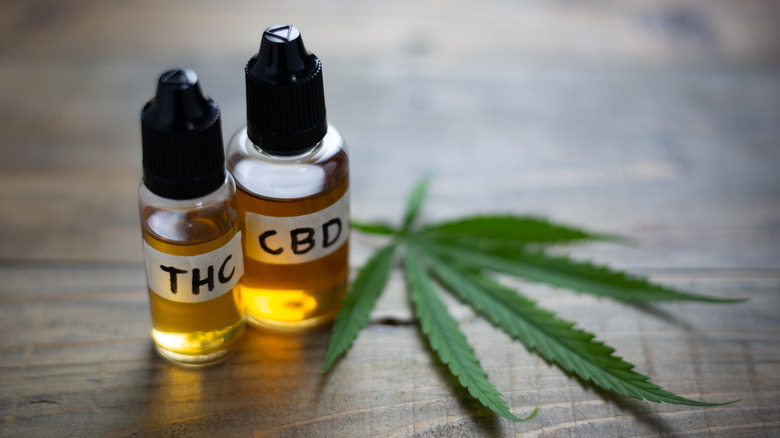THC Versus CBD: What's The Difference?
THC (tetrahydrocannabinol) and CBD (cannabidiol) both come from cannabis, a plant in the Cannabaceae family. CBD is derived from hemp and marijuana plants while the majority of THC that is used in products comes from marijuana. Technically, the only difference between hemp and marijuana is how much THC they contain. Hemp plants contain .3% or less THC while marijuana plants contain varying amounts of it, according to Healthline.
THC and CBD are cannabinoids. They attach themselves to cannabinoid receptors in the body, which are part of the endocannabinoid system (ECS). The ECS works with just about every aspect of your body, including pain control, hunger, memory, moods, and inflammatory responses. In fact, there are more cannabinoid receptors (CB1 receptors) in the brain than many other types of brain receptors. CB1 receptors regulate many neurotransmitters in the brain, helping to oversee activity such as hunger or temperature. CB2 receptors are present in immune tissues and are beneficial for controlling inflammation, especially in the intestines (via Harvard Health Publishing).
THC causes a more euphoric experience than CBD
THC gives cannabis its psychoactive qualities, leading people to experience a high when they take it. THC can be consumed in a variety of ways. It can be smoked, taken orally in tinctures, or eaten in edibles. It can also be applied topically. While many people smoke marijuana recreationally, THC may have several medicinal uses that help with depression, glaucoma, nausea, pain, and seizures (via Verywell Mind).
CBD affects the brain differently than THC. Prescription CBD is used to help with epilepsy (via Web MD). A study conducted in 2018 showed that CBD may have a variety of uses that help reduce anxiety, pain, nausea, and sleep disorders. Like THC, you can take CBD in tincture form or edibles. Prevention notes that the body absorbs tinctures better than edibles. You should always check with your doctor before taking CBD or THC, as they can have some adverse effects and drug interactions.


